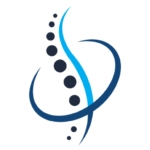Soumbos Osteopathy
Decrease Pain, Improve Mobility, and Enhance Well-Being with Soumbos Osteopathy


Tired of Chronic Pain, Limited Mobility, and Feeling Held Back?
Living with constant discomfort can make everyday activities—like playing with your children or enjoying your hobbies—difficult.
At Soumbos Osteopathy, I offer personalized, non-invasive treatments to help reduce pain and enhance your overall well-being.
What is Osteopathy?
Osteopathy is a precise and gentle hands-on manual therapy that focuses on the musculoskeletal system and its connection to overall health. Osteopathic Manual Practitioners (OMPs) believe the body has an inherent ability to heal itself when its structure is balanced. Through gentle manipulation and techniques, OMPs address restrictions in muscles, joints, and connective tissues, promoting optimal function and pain relief.
Benefits of Osteopathy

Reduced Pain
Customized treatment plans address the underlying causes of pain and discomfort. Experience pain relief allowing you to live a more active and fulfilling life.

Improved Mobility
Gentle, yet effective techniques help to restore joint function and muscle balance. Experience increased flexibility and range of motion, enabling you to move freely and confidently.

Enhanced Well-being
By addressing the body’s interconnected systems to support optimal function, a holistic approach promotes overall health and vitality, helping you feel your best.
See What Others Are Saying!
Osteopathic Techniques
Using various manual assessment and technique modalities, Osteopathic Manual Practitioners work to identify and ease restrictions, constrictions and pain; reduce swelling; improve tissue mobility; and promote proper function and healing in people of all ages. There are four main types of techniques used in Osteopathy: soft tissue manipulation, Osteopathic articular technique, cranial Osteopathy, and visceral manipulation.
Soft Tissue Manipulation
This method is used to evaluate the condition of tissues, ease restrictions, help the body’s fluids (blood, lymph, etc.) flow smoothly and restore function.

Osteopathic Articular Technique
The osteopathic articular technique, involving gently moving two joint surfaces, is used to reduce muscle spasms, ease neurological irritations, assist in joint mobility and help reduce pain and discomfort.

Cranial Osteopathy
It is used to assess and treat the mobility of the cranium and its contents. It may also be used to assess and treat the spine, sacrum and other parts of the body.

Visceral Manipulation
Visceral Manipulation is used to effectively treat organs and viscera of the body, including the lungs, heart, liver, spleen, kidneys, stomach, pancreas, intestines, the bladder and the uterus.

What Can Osteopathy Help With?
Lower Back Pain
Sciatica
Hip Pain
Knee Pain
Ankle & Foot Pain
Headaches
TMJ Pain
Neck Pain
Upper Back Pain
Shoulder Pain
Elbow Pain
Wrist & Hand Pain
Digestive Issues
Respiratory Issues
Posture
Balance
Sleep Issues
Stress
Frequently Asked Questions
A referral is not required to book an appointment.
Comfortable clothing that allows for freedom of movement is preferred.
I assess and treat areas of the body that have restricted movement. The goal is to restore/improve movement.
An average treatment plan consists of 4 sessions, however many patients experience improvement with the first 1-2 sessions.
Osteopathic treatments are very gentle and do not create pain.
Don't Let Pain Hold You Back
Andrew offers a free consultation to answer your questions and help you decide if Osteopathy is right for you.
